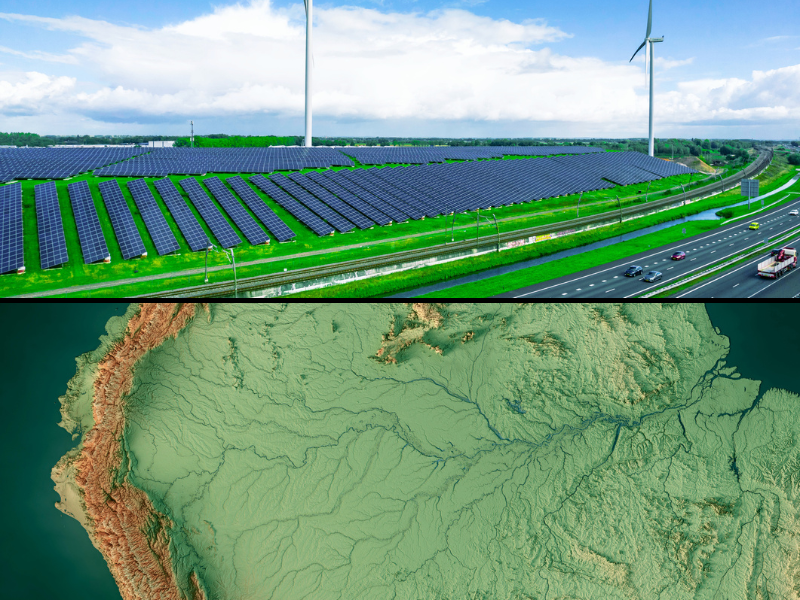Two reports from oil and gas industry groups released in November detail the voluntary greenhouse gas (GHG) emissions reduction efforts led by the industry and highlight the progress being made on that front.
The annual progress report of the Oil and Gas Climate Initiative (OGCI), a coalition of 12 of the world’s largest oil and gas companies including Aramco, bp, Chevron, CNPC, Eni, Equinor, ExxonMobil, Occidental, Petrobras, Repsol, Shell and TotalEnergies, shows its members have cut their upstream methane emissions by 55 percent and reduced upstream GHG emissions from flaring by 47 percent.
“Flaring” in oil and gas development refers to the controlled burning of natural gas that cannot be processed or sold. This occurs at oil production sites where gas is extracted along with oil but is not economically viable to capture and transport to market. Flaring produces carbon dioxide and smaller amounts of pollutants like methane and nitrogen oxides.
“Flaring intensity” refers to the amount of gas being flared in relation to the volume of oil being produced or to the overall level of production activity. It is a metric used to assess how much gas is being wasted through flaring and to gauge the efficiency and environmental impact of the flaring practices at a given site.
OGCI members also lowered their upstream carbon dioxide intensity by 21 percent since 2017, with total GHG emissions also reduced 19 percent since 2017. OGCI members represented 26 percent of global oil and gas output in 2023.
Meanwhile, the 2024 Climate Report of the Interstate Natural Gas Association of America (INGAA), a 27-member trade organization representing the vast majority of the interstate natural gas transmission pipeline companies in the United States and Canada, shows a 14 percent decrease methane emissions intensity from their members between 2021 and 2022, with a 6 percent decrease in overall methane emissions.
These two industry studies mirror the findings of the U.S. Environmental Protection Agency’s recently released 2023 data from its Greenhouse Gas Reporting Program (GHGRP), which show a 44 percent drop in methane emissions overall from 2011.
EPA found similar conclusions in a report released in conjunction with the Clean Air Task Force in June, showing a 37 percent overall decline in methane emissions from 2015 to 2022. Meanwhile, the 2024 annual report of The Environmental Partnership, a voluntary collective of oil and gas companies “committed to continuously improving the industry’s environmental performance,” found its members, who represent nearly 70 percent of U.S. onshore oil and natural gas production, have decreased their flare volumes by 76 percent since 2019.
The oil and natural gas deposits found throughout the United States are abundant, affordable, and environmentally safe. Moreover, they can ensure the United States is the world’s largest energy producer well beyond the 21st century. Therefore, policymakers should refrain from placing unnecessary burdens on the natural gas and oil industries which, as these reports demonstrate, are committed to safe, environmentally responsible extraction and positively impact state economies.
The following documents provide more information about fossil fuels.
Debunking Four Persistent Myths about Hydraulic Fracturing
https://heartland.org/wp-content/uploads/2023/10/Oct-23-FrackingMyths.pdf
This Heartland Institute Policy Brief by Policy Analyst Timothy Benson and former Heartland communications intern Linnea Lueken outlines the basic elements of the fracking process and then refutes the four most widespread fracking myths, providing lawmakers and the public with the research and data they need to make informed decisions about hydraulic fracturing.
Impacts of the Natural Gas and Oil Industry on the U.S. Economy in 2019
https://www.api.org/-/media/Files/Policy/American-Energy/PwC/API-PWC-Economic-Impact-Report.pdf
This study, conducted by PricewaterhouseCoopers and commissioned by the American Petroleum Institute, shows that the natural gas and oil industry supported 11.3 million U.S. jobs in 2019, produced $892 billion in labor income, and had a nationwide economic impact of nearly $1.7 trillion The study also shows the natural gas and oil industry has had widespread impacts in each of the 50 states.
America’s Progress at Risk: An Economic Analysis of a Ban on Fracking and Federal Leasing for Natural Gas and Oil Development
https://www.api.org/~/media/Files/Oil-and-Natural-Gas/Hydraulic-Fracturing/2020/fracking-ban-study-americas-progress-at-risk.pdf
The study from the American Petroleum Institute (conducted by economic modeling firm OnLocation) warns that banning federal leasing and fracking on public and private lands, which some presidential candidates have proposed, would cost up to 7.5 million American jobs in 2022 alone, lead to a cumulative GDP loss of $7.1 trillion by 2030, slash household incomes by $5,400 annually, increase household energy costs by more than $600 per year and reduce farm incomes by 43 percent due to higher energy costs. If a ban is enacted, the U.S. would flip from being a net exporter of oil and petroleum products to importing more than 40 percent of supplies by 2030
What If…Hydraulic Fracturing Were Banned? (2020 Edition)
https://www.globalenergyinstitute.org/sites/default/files/2019-12/hf_ban_report_final.pdf
This study from the Global Energy Institute at the U.S. Chamber of Commerce says a ban on fracking in the United States would be catastrophic for our economy. Their analysis shows that if such a ban were imposed in 2021, by 2025 it would eliminate 19 million jobs and reduce U.S. Gross Domestic Product by $7.1 trillion. Tax revenue at the local, state, and federal levels would decline by nearly a combined $1.9 trillion. Natural gas prices would leap by 324 percent, causing household energy bills to more than quadruple. By 2025, motorists would pay twice as much at the pump for gasoline as oil prices spike to $130 per barrel, while less domestic energy production would also mean less energy security.
The U.S. Leads the World in Clean Air: The Case for Environmental Optimism
https://files.texaspolicy.com/uploads/2018/11/27165514/2018-11-RR-US-Leads-the-World-in-Clean-Air-ACEE-White.pdf
This paper from the Texas Public Policy Foundation examines how the United States achieved robust economic growth while dramatically reducing emissions of air pollutants. The paper states that these achievements should be celebrated as a public policy success story, but instead the prevailing narrative among political and environmental leaders is one of environmental decline that can only be reversed with a more stringent regulatory approach. Instead, the paper urges for the data to be considered and applied to the narrative.
Nothing in this Research & Commentary is intended to influence the passage of legislation, and it does not necessarily represent the views of The Heartland Institute. For further information on this subject, visit Environment & Climate News, The Heartland Institute’s website, and PolicyBot, Heartland’s free online research database.
The Heartland Institute can send an expert to your state to testify or brief your caucus; host an event in your state; or send you further information on a topic. Please don’t hesitate to contact us if we can be of assistance! If you have any questions or comments, contact Heartland’s Government Relations department, at [email protected] or 312/377-4000




